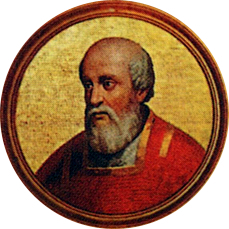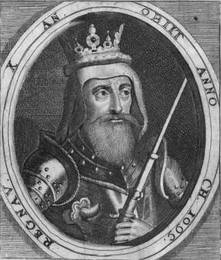|
Adolf I, Count Of Holstein
Adolf I (died 13 November 1130) was the first Counts of Schauenburg and Holstein, Count of Schauenburg from 1106 and the second Count of Holstein from 1111. He made an important contribution to the colonisation and Germanisation of the lands north of the Elbe. He was appointed to hold as fiefs Holstein and Stormarn (gau), Stormarn, including Hamburg, by Lothair, Duke of Saxony, in 1111. By this appointment Adolf became the leader of the defence of Germany against the Wagri. Allied with Henry (Obodrite prince), Henry, the prince of the Obotrites, he repeatedly waged war on Wagria and the Rugians. After Henry's death (1127), Adolf remained allied with his sons Canute and Sventepolk, but they were soon dead and Lothair, by then King of Germany, had made Canute Lavard, a Danish prince, Duke of Schleswig. Feeling his authority threatened by the Danish upstart, Adolf attacked his castle of Albergs, captured the garrison, and destroyed its defences. He left his counties intact to his s ... [...More Info...] [...Related Items...] OR: [Wikipedia] [Google] [Baidu] |
House Of Schauenburg
The House of Schaumburg was a dynasty of German rulers. Until , it was also known as the House of Schauenburg. Together with its ancestral possession, the County of Schaumburg, the family also ruled the County of Holstein and its partitions Holstein-Itzehoe, Holstein-Kiel, Holstein-Pinneberg (till 1640), Holstein-Plön, Holstein-Segeberg and Holstein-Rendsburg (till 1460) and through the latter at times also the Duchy of Schleswig. History The Schaumburgs were named after Schauenburg Castle, near Rinteln on the Weser, where the owners started calling themselves Lords (from 1295 Counts) of Schauenburg. Adolf I probably became the first Lord of Schauenburg in 1106. In 1110, Adolf I, Lord of Schauenburg was appointed by Lothair, Duke of Saxony to hold Holstein and Stormarn, including Hamburg, as fiefs.Lemma Schauenburg/Schaumburg. In: Klaus-Joachim Lorenzen-Schmidt, Ortwin Pelc (Hrsg.): ''Schleswig-Holstein Lexikon''. 2. Aufl., Wachholtz, Neumünster, 2006. Holstein was ... [...More Info...] [...Related Items...] OR: [Wikipedia] [Google] [Baidu] |
1130 Deaths
Year 1130 ( MCXXX) was a common year starting on Wednesday of the Julian calendar. Events * January 22 – Jin–Song Wars: Jin forces take Hangzhou. * February 4 – Jin–Song Wars: Jin forces take Shaoxing. * February 14 – Pope Innocent II succeeds Pope Honorius II, as the 164th pope. Other factions (including Roger II of Sicily), however, support Anacletus II as pope, leading to the papal schism of 1130, and Innocent flees to France. * March 26 – Magnus IV and his uncle Harald Gille become joint kings of Norway, starting the civil war era in Norway. * April 24 – Jin–Song Wars: Battle of Huangtiandang – Naval forces of the Song dynasty trap Wuzhu's Jin troops in the city for 48 days. * December 25 – Antipope Anacletus crowns Roger II of Sicily king. * Approximate date – Magnus the Strong is deposed as king of Götaland, when Sverker the Elder proclaims himself king of Sweden. Births * Eustace IV of Boulogne, a Count o ... [...More Info...] [...Related Items...] OR: [Wikipedia] [Google] [Baidu] |
Year Of Birth Unknown
A year is a unit of time based on how long it takes the Earth to orbit the Sun. In scientific use, the tropical year (approximately 365 solar days, 5 hours, 48 minutes, 45 seconds) and the sidereal year (about 20 minutes longer) are more exact. The modern calendar year, as reckoned according to the Gregorian calendar, approximates the tropical year by using a system of leap years. The term 'year' is also used to indicate other periods of roughly similar duration, such as the lunar year (a roughly 354-day cycle of twelve of the Moon's phasessee lunar calendar), as well as periods loosely associated with the calendar or astronomical year, such as the seasonal year, the fiscal year, the academic year, etc. Due to the Earth's axial tilt, the course of a year sees the passing of the seasons, marked by changes in weather, the hours of daylight, and, consequently, vegetation and soil fertility. In temperate and subpolar regions around the planet, four seasons ar ... [...More Info...] [...Related Items...] OR: [Wikipedia] [Google] [Baidu] |
Count Of Schauenburg
The Counts of Schauenburg and Holstein were titles of the Holy Roman Empire. The dynastic family came from the County of Schauenburg near Rinteln (district Schaumburg) on the Weser in Germany. Together with its ancestral possessions in Bückeburg and Stadthagen, the House of Schauenburg ruled the County of Schauenburg and the County of Holstein. The comital titles of Holstein were subject to the liege lord, the Dukes of undivided Saxony until 1296, and thereafter the Dukes of Saxe-Lauenburg. The counties of Schauenburg and Holstein The County of Schaumburg originated as a medieval county, which was founded at the beginning of the 12th century. It was named after Schauenburg Castle, near Rinteln on the Weser, where the owners started calling themselves Lords (from 1295 Counts) of Schauenburg. Adolf I probably became the first Lord of Schauenburg in 1106. In 1110, Adolf I, Lord of Schauenburg was appointed by Lothair, Duke of Saxony to hold Holstein and Stormarn, in ... [...More Info...] [...Related Items...] OR: [Wikipedia] [Google] [Baidu] |
Godfrey Of Hamburg '', in which she is the kind and brave ruler of the people of Drake City on planet Gemina.
{{disambiguation, geo ...
Godfrey may refer to: People * Godfrey (name), a given name and surname * Godfrey (comedian), American comedian, actor Places In the United States * Godfrey, Georgia, an unincorporated community * Godfrey, Illinois, a village * Godfrey, Kansas, an unincorporated community * Godfrey, Washington, a ghost town * Godfrey, West Virginia, an unincorporated community Elsewhere * Godfrey, Ontario, a Canadian community Fiction * Glorious Godfrey, often known just by the name "Godfrey", a DC Comics supervillain * Private Godfrey, a character from ''Dad's Army'' * Queen Goodfey, supporting character of ''Mysticons ''Mysticons'' is an animated television series that aired from August 28, 2017, to September 15, 2018. A collaboration between companies Nelvana, Playmates Toys, and The Topps Company, it was created by Sean Jara, who also served as executive st ... [...More Info...] [...Related Items...] OR: [Wikipedia] [Google] [Baidu] |
House Of Schaumburg
The House of Schaumburg was a dynasty of German rulers. Until , it was also known as the House of Schauenburg. Together with its ancestral possession, the County of Schaumburg, the family also ruled the County of Holstein and its partitions Holstein-Itzehoe, Holstein-Kiel, Holstein-Pinneberg (till 1640), Holstein-Plön, Holstein-Segeberg and Holstein-Rendsburg (till 1460) and through the latter at times also the Duchy of Schleswig. History The Schaumburgs were named after Schauenburg Castle, near Rinteln on the Weser, where the owners started calling themselves Lords (from 1295 Counts) of Schauenburg. Adolf I probably became the first Lord of Schauenburg in 1106. In 1110, Adolf I, Lord of Schauenburg was appointed by Lothair, Duke of Saxony to hold Holstein and Stormarn, including Hamburg, as fiefs.Lemma Schauenburg/Schaumburg. In: Klaus-Joachim Lorenzen-Schmidt, Ortwin Pelc (Hrsg.): ''Schleswig-Holstein Lexikon''. 2. Aufl., Wachholtz, Neumünster, 2006. Holstein was oc ... [...More Info...] [...Related Items...] OR: [Wikipedia] [Google] [Baidu] |
Second Battle Of Chlumec
The second (symbol: s) is a unit of time derived from the division of the day first into 24 hours, then to 60 minutes, and finally to 60 seconds each (24 × 60 × 60 = 86400). The current and formal definition in the International System of Units (SI) is more precise: The second ..is defined by taking the fixed numerical value of the caesium frequency, Δ''ν''Cs, the unperturbed ground-state hyperfine transition frequency of the caesium 133 atom, to be when expressed in the unit Hz, which is equal to s−1. This current definition was adopted in 1967 when it became feasible to define the second based on fundamental properties of nature with caesium clocks. As the speed of Earth's rotation varies and is slowing ever so slightly, a leap second is added at irregular intervals to civil time to keep clocks in sync with Earth's rotation. The definition that is based on of a rotation of the earth is still used by the Universal Time 1 (UT1) system. Etymology "Minute" comes ... [...More Info...] [...Related Items...] OR: [Wikipedia] [Google] [Baidu] |
Duke Of Schleswig
The following is a list of earl, jarls and dukes, who ruled over Schleswig respectively Southern Jutland (Sønderjylland). First jarls/dukes House of Estridsen (1080–1375) House of Schauenburg (1325-1459) Under domain of Oldenburg In 1459, after the annexation of both Schleswig and Holstein, Christian I of Denmark created two separate states: the Duchy of Schleswig and Duchy of Holstein, to be ruled by two different branches of the House of Oldenburg over the next few centuries. In 1864, following the Second Schleswig War, the Duchy of Schleswig-Holstein became an occupied territory of the German Confederation and two years later, following the Austro-Prussian War, part of the new Prussian Province of Schleswig-Holstein. See also *List of Danish monarchs *List of rulers of Schleswig-Holstein Notes {{DEFAULTSORT:Schleswig, Dukes Of Lists of Danish people Lists of monarchs Former duchies People from the Duchy of Schleswig Dukes of Schleswig, * Lists of dukes Dani ... [...More Info...] [...Related Items...] OR: [Wikipedia] [Google] [Baidu] |
Canute Lavard
Saint Knud, also known as Canute Lavard ( Danish: Knud Lavard; cognate with English Lord; 12 March 1096 – 7 January 1131) was a Danish prince. Later he was the first Duke of Schleswig and the first border prince who was both a Danish and a German vassal, a position leading towards the historical double position of Southern Jutland. He was killed by his cousin Magnus the Strong ( – 1134), who saw him as a rival to the Danish throne. Canute Lavard was canonized in 1170. He was an ancestor of the Valdemarian kings (''Valdemarerne'') and of their subsequent royal line. Canute Lavard was the father of King Valdemar I of Denmark (''Valdemar den Store'') and grandfather of King Valdemar II of Denmark (''Valdemar Sejr''). Biography Canute was the only legitimate son of King Eric I of Denmark (died 1103) and Boedil Thurgotsdatter, but as a minor he was bypassed in the election of 1104. He grew up in close contact with the noble family of Hvide, who were later on t ... [...More Info...] [...Related Items...] OR: [Wikipedia] [Google] [Baidu] |
King Of Germany
This is a list of monarchs who ruled over East Francia, and the Kingdom of Germany (), from Treaty of Verdun, the division of the Francia, Frankish Empire in 843 and Dissolution of the Holy Roman Empire, the collapse of the Holy Roman Empire in 1806 until German Revolution of 1918–1919, the collapse of the German Empire in 1918: East Francia (843–962) Carolingian dynasty Conradine dynasty Ottonian dynasty Holy Roman Empire (962–1806) The title "King of the Romans", used in the Holy Roman Empire, was, from the coronation of Henry II, considered equivalent to King of Germany. A king was chosen by the German electors and would then proceed to Rome to be Coronation of the Holy Roman Emperor, crowned emperor by the pope. Ottonian dynasty (continued) Salian dynasty Supplinburger dynasty Hohenstaufen dynasty Interregnum Changing dynasties Habsburg dynasty Modern Germany (1806–1918) Confederation of the Rhine (1806–1813) German Confederation (18 ... [...More Info...] [...Related Items...] OR: [Wikipedia] [Google] [Baidu] |




